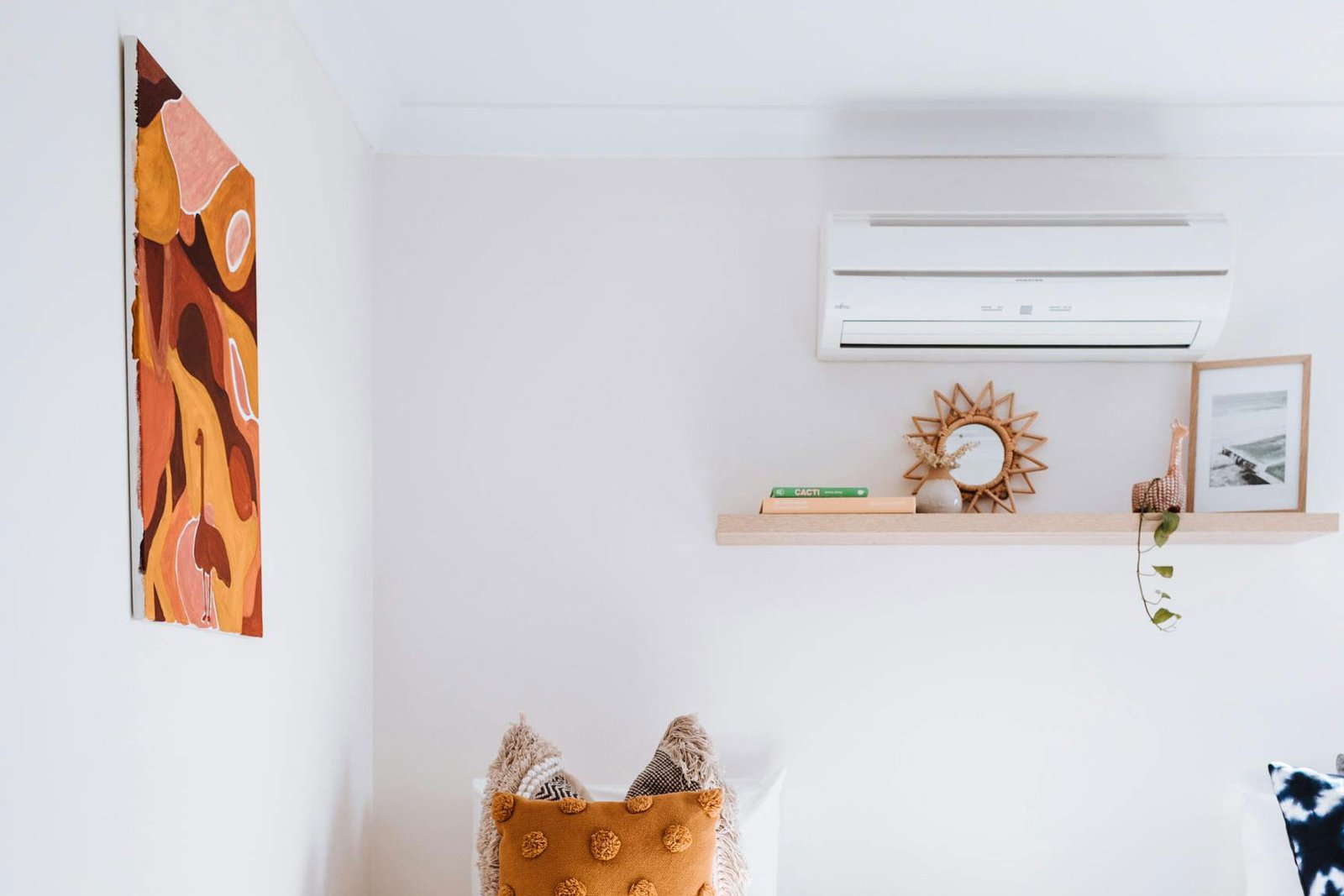As a savvy homeowner, you understand the value of a comfortable living space. With temperatures rising and energy costs soaring, having an efficient air conditioning system is no longer a luxury—it’s a necessity. But navigating the world of air conditioning installation can be daunting, especially when you’re juggling a busy career and family life. Fear not! This comprehensive guide will equip you with the knowledge you need to make informed decisions about your home’s cooling system, ensuring comfort and efficiency for years to come.

The Importance of Efficient Air Conditioning for Home Comfort
Imagine coming home after a long day at work to a house that’s a perfect oasis of coolness. That’s the power of an efficiently installed air conditioning system. It’s not just about beating the heat; it’s about creating a haven where you can relax, recharge, and enjoy quality time with your family.
A well-installed AC system does more than just cool your home. It improves air quality, reduces humidity, and can even increase your property value.
With rising awareness about energy consumption, an efficiently installed AC system can significantly reduce your carbon footprint and energy bills. It’s a win-win situation for your comfort and your conscience.
Understanding Your Home’s Cooling Needs: Factors to Consider Before Installation
Before diving into the world of air conditioning installation, it’s crucial to assess your home’s specific cooling needs. This step will ensure you choose a system that’s just right for your space and lifestyle.
First, consider the size of your home. A system that’s too small will struggle to cool your space effectively, while one that’s too large will cycle on and off frequently, wasting energy and failing to dehumidify properly. The layout of your home also plays a role—open floor plans may require different solutions than homes with many small rooms.
Next, think about Brisbane’s climate. High humidity is something we must contend with, so you’ll want a system that excels at moisture removal.
Your home’s insulation and sun exposure are other crucial factors. Well-insulated homes retain cool air better, potentially allowing for a smaller system. Homes with large windows or significant sun exposure may require more powerful cooling solutions.
Lastly, consider your family’s habits and preferences. Do you work from home often? Are there rooms that need extra cooling? Do you have family members with allergies or respiratory issues? All these factors will influence your choice of air conditioning system.
Types of Air Conditioning Systems: Overview and Comparison
Now that you understand your home’s cooling needs, let’s explore the various types of air conditioning systems available. Each has its own set of advantages and considerations, so it’s important to find the one that best suits your specific situation.
Central Air Conditioning: This is the most common type of system in many homes. It uses a network of ducts to distribute cool air throughout the house. Central air is efficient for cooling large spaces and offers consistent temperature control. However, it requires existing ductwork or the installation of new ducts, which can be costly.
Ductless Mini-Split Systems: These systems consist of an outdoor compressor unit and one or more indoor air-handling units. They’re ideal for homes without existing ductwork or for adding cooling to specific rooms. Mini-splits offer great energy efficiency and allow for zone cooling, but they can be more expensive upfront than central air systems.
Window Units: These self-contained units fit into a window opening. They’re affordable and easy to install, making them a good choice for cooling single rooms or small apartments. However, they can be noisy and less energy-efficient than other options.
Portable Air Conditioners: These freestanding units can be moved from room to room. They’re a flexible option for renters or those who need occasional cooling. Like window units, they tend to be less efficient and can only cool small areas effectively.
Finding the Right Air Conditioner for Your Home: Sizing and Efficiency
Choosing the perfect air conditioner for your home involves more than just picking a type of system. You’ll need to consider factors such as size and efficiency to ensure optimal performance and energy savings.
When it comes to size, bigger isn’t always better. An oversized unit will cycle on and off frequently, leading to increased energy consumption and uneven cooling. On the other hand, an undersized unit will struggle to cool your home effectively, working overtime and driving up your energy bills.
Efficiency is another crucial factor to consider. Look for air conditioners with high Seasonal Energy Efficiency Ratio (SEER) ratings. The higher the SEER rating, the more energy-efficient the unit will be, potentially saving you money on your bills in the long run.
Preparing for Installation: What Homeowners Need to Know
Proper preparation can make your air conditioning installation smoother and more efficient. Here’s what you need to know before the installation team arrives.
First, clear the area around where the indoor and outdoor units will be installed. For central air systems, this might mean clearing space in your attic or basement for the air handler and making sure there’s a clear path to run ductwork. For outdoor units, clear a space that’s level and away from plants or structures that could impede airflow.
If you’re replacing an existing system, consider having your ductwork inspected and cleaned. Leaky or dirty ducts can significantly reduce your new system’s efficiency.
Check your home’s electrical system to ensure it can handle the new air conditioner’s power requirements. You may need to upgrade your electrical panel or install a dedicated circuit for the new system.
Consider any additional features you might want, such as a programmable thermostat or air purification system. It’s often easier and more cost-effective to install these features along with your new air conditioner.
Lastly, check if there are any restrictions on outdoor unit placement or if you need to obtain approval from a body corporate before installation.
The Installation Process: Step-by-Step Guide
While it’s best to leave air conditioning installation to the professionals, understanding the process can help you make informed decisions and ensure everything goes smoothly.
The installation typically begins with the removal of the old system if there is one. This includes not just the air conditioner itself, but also any outdated thermostats or ductwork that needs replacing.
Next, the installers will place the new outdoor unit. This unit houses the compressor and condenser and is usually placed on a concrete pad near your home. It’s crucial that this unit is level and has proper clearance for airflow.
For central air systems, the next step is installing the indoor air handler and evaporator coil. This is usually placed in the attic, basement, or a dedicated closet. The installers will also run refrigerant lines between the indoor and outdoor units.
If you’re installing a ductless mini-split system, the installers will mount the indoor air handling units in the designated rooms and run refrigerant lines to the outdoor unit.
The next step is installing or updating the ductwork. This can be one of the most time-consuming parts of the process, especially if significant modifications are needed.
After all components are in place, the installers will connect the electrical wiring and install the thermostat. They’ll then charge the system with refrigerant and perform a series of tests to ensure everything is working correctly.
Post-Installation Maintenance Tips for Optimal Performance
Congratulations! Your new air conditioning system is installed. But the journey doesn’t end here. Proper maintenance is key to ensuring your system operates efficiently and lasts for years to come.
First and foremost, change or clean your air filters regularly. For most systems, this means every 1-3 months. Clean filters ensure good airflow and help your system operate efficiently. They also improve your home’s air quality by trapping dust and allergens.
Keep the area around your outdoor unit clear of debris, leaves, and overgrown vegetation. This ensures proper airflow and prevents damage to the unit.
Schedule annual professional maintenance. A technician can clean the coils, check refrigerant levels, and identify any potential issues before they become major problems. This not only keeps your system running efficiently but can also extend its lifespan.
Regularly check your thermostat settings to ensure they align with your current needs and schedule. A programmable or smart thermostat can help optimise your system’s performance and save energy.
Pay attention to any unusual sounds, odours, or changes in performance. Early detection of issues can prevent costly repairs down the line.
Need more advice?
If you are wanting to talk through options or ready to jump straight into installation of a new system, we are here at OHMY Electrical Contractors to chat and provide a plan and solutions that work best for your space. Contact us today.


